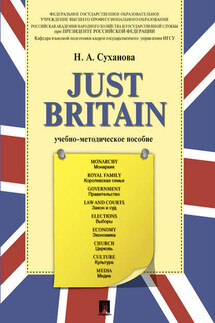Just Britain. Учебно-методическое пособие - страница 2
BRITISH ROYAL RESIDENCES
The Sovereign’s official residence in London is Buckingham Palace. It is the site of most state banquets, investitures, royal christenings and other ceremonies. Another official residence is Windsor Castle, the largest occupied castle in the world, which is used principally at weekends, Easter and during Royal Ascot, an annual race meeting that is part of the social calendar. The Sovereign’s official residence in Scotland is the Palace of Holyroodhouse in Edinburgh. The monarch stays at Holyrood for at least one week each year, and when visiting Scotland on state occasions.
Historically, the Palace of Westminster and the Tower of London were the main residences of the English Sovereign until Henry VIII acquired the Palace of Whitehall. Whitehall was destroyed by fire in 1698, leading to a shift to St James’s Palace. Although replaced as the monarch’s primary London residence by Buckingham Palace in 1837, St James’s is still the senior palace and remains the ceremonial Royal residence. For example, foreign ambassadors are accredited to the Court of St. James’s, and the Palace is the site of the meeting of the Accession Council. It is also used by other members of the Royal Family>2>3>4>5>6.
TASKS
1. Find the following words and word combinations in the text and translate them into Russian. Think of possible explanations of the notions. Pay attention to prepositions.
– constitutional monarchy
– to undertake various official ceremonial duties
– to be limited to non-partisan functions
– to bestow honors and appoint
– monarch’s royal prerogative
– to exclude from succession to the throne
– to be merged to create the kingdom
– to secede from the union
– to recognize the evolution of the dominions
– uncodified constitution
– God Save the Queen (national anthem)
– to exercise sovereign powers
– to command the support of the House of Commons
– to take office by attending the Monarch in private audience
– to known as the royal prerogative
– to act within the constraints of convention and precedent
– to exercise prerogative on the advice of ministers responsible to Parliament
– as a constitutional ruler
– to ultimately accept the decisions of the Prime Minister
– official residence
– the site of most ceremonies
– ambassadors accredited to the Court of St. Jame’s
2. – Give the general meaning of the word Monarchy. How do you understand it?
– What other monarchies do you know? What continent are they located on? Was the situation the same along the whole history of mankind?
– Is the monarchy a tradition or could it be considered as system chosen by the people themselves?
– Does the queen rule alone? What is the main governing body in the UK?
– Why do some people think that the institution of monarchy is undemocratic?
– How is the monarch involved in Parliament’s activities?
– Speak about the ceremony of the Prime Minister’s taking office. Is it a matter of rule or tradition?
III. Royal family
Queen Elizabeth II
Princess Elizabeth Alexandra Mary was born in London on 21 April 1926; she was educated privately, and assumed official duties at 16. During World War II she served in the Auxiliary Territorial Service, and by an amendment to the Regency Act she became a state counsellor on her 18th birthday. On the death of George VI in 1952 she succeeded to the throne while in Kenya with her husband and was crowned on 2 June 1953.


